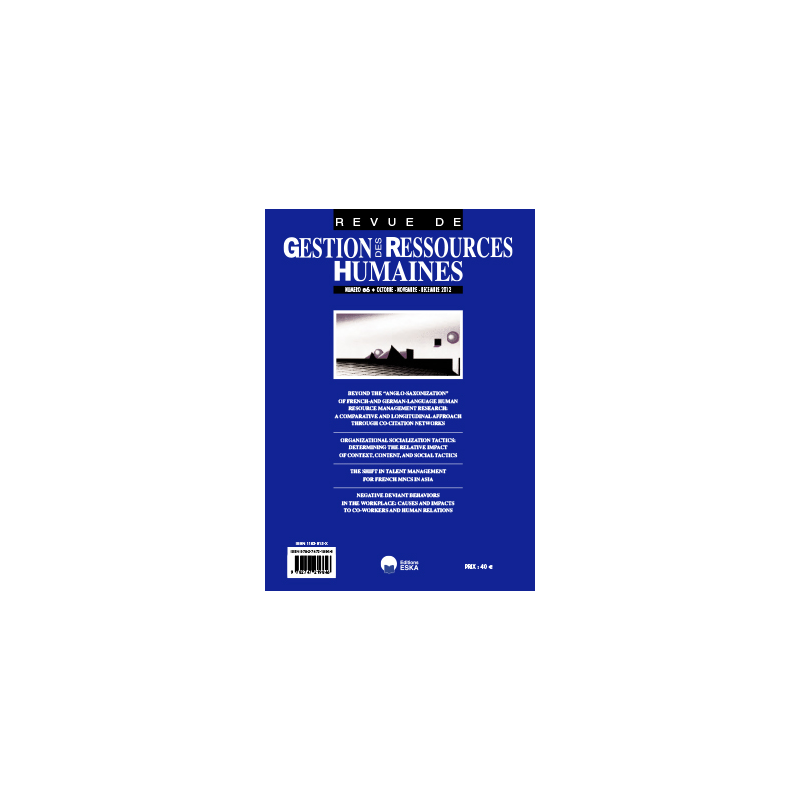



 POUR COMMANDER
POUR COMMANDER
Contactez les Editions ESKA - par téléphone 0142865565 - par mail congres@eska.fr
 CGV
CGV
Consultez nos Conditions Générales de Vente
Abstract
This article presents a comparative analysis of French- and German-language Hrm research publications through co-citation networks, a method allowing to explore the theoretical frameworks underlying a given research discipline. A database was constructed based on the bibliographies of articles published in two specialized academic journals: the revue de Gestion des ressources Humaines and the Zeitschrift für Personalforschung, representing respectively the output of the French and the German Hrm research communities. Articles published in both journals were analyzed with a comparative and longitudinal approach for the period 1991-2006. In our first part, an analysis of bibliographic references shows an increasing influence of English-language publications on the bibliographies of the French and German research communities, and reveals strong similarities in the two communities’ references to English-language sources, which may corroborate the thesis of a convergence of the theoretical frameworks of international research. In a second part of the article, we use the co-citation network approach to mitigate the convergence thesis by showing that the reception of English-language literature appears to be substantially different in the two research communities.
Keywords:
Hrm research; publications; co-citation networks; France/Germany comparison; bibliometrics